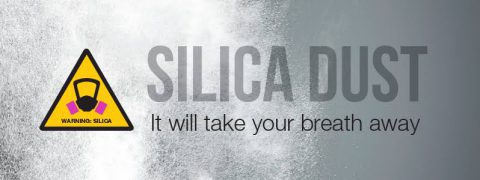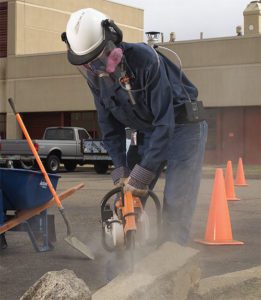Silica Dust Air Monitoring & Management Plans

Until recently, the risks from silica dust in the workplace have been under estimated. Crystalline silica (silica) is found in sand, stone, concrete and mortar. It is also used to make a variety of products including composite stone used to fabricate kitchen and bathroom benchtops, bricks, tiles and some plastics. When workers cut, crush, drill, polish, saw or grind products that contain silica, silica dust particles are generated that are small enough to lodge deep in the lungs and cause illness or disease including silicosis, which is why air monitoring of crystalline silica dust and silica dust management plans are now recognised as important in workplaces.
Our Experience Saves Developer’s Money When Getting Air Monitoring of Crystalline Silica Dust.
Examples of work activities that can generate respirable silica dust particles include:

- during fabrication and installation of composite (engineered, or manufactured) stone counter-tops
- excavation, earth moving and drilling plant operations
- clay and stone processing machine operations
- paving and surfacing
- mining, quarrying and mineral ore treating processes
- tunnelling
- construction labouring activities
- brick, concrete or stone cutting; especially using dry methods
- abrasive blasting (blasting agent must not contain greater than 1 per cent of crystalline silica)
- foundry casting
- angle grinding, jack hammering and chiselling of concrete or masonry
- hydraulic fracturing of gas and oil wells, and
- pottery making.
Managers of workplaces should keep worker exposures to respirable silica dust as low as reasonably practicable and air monitoring should be conducted if there is any doubt that the exposure standard is being exceeded, or to find out if there is a risk to a worker’s health.
Atma Environmental can help you keep your workers safe by conducting workplace air monitoring for crystalline silica. Monitoring involves attaching a personal air pump and sampler to the worker and sampling within the workers breathing zone for an entire shift. Laboratory analysis allows for the calculation of both respirable dust concentration and the respirable crystalline silica concentration, which can be compared to the exposure standard.
Rates of silicosis are increasing due to the amount of manufactured stone and silica-containing products in and entering the building industry.
Keep your workers safe and healthy. Engage Atma Environmental to monitor worker respirable crystalline silica risks in your workplace. We can identify risks and help you develop a management plan.




 Get a Quote
Get a Quote